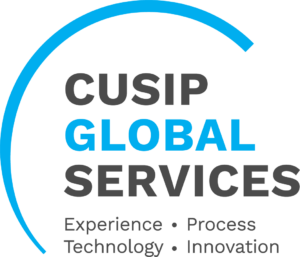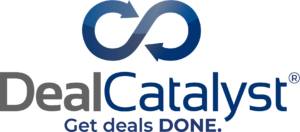August 29, 2024 - This article was first published in the 2024 summer edition of Loans Magazine, which can be accessed here. In March 2023, the Intergovernmental Panel on Climate Change (IPCC) issued its Sixth Assessment Report stating that “global greenhouse gas emissions have continued to increase, with unequal historical and ongoing contributions arising from unsustainable energy use.” The concerns highlighted by the report were not new. Indeed, sustainability has become a key focus for global governing bodies, public leaders and private actors alike over the course of the past few decades, spurring them to adopt a suite of sustainability-related regulations and policies. These include the Corporate Sustainability Due Diligence Directive, recently approved by the European Union Council, and new SEC disclosure rules relating to carbon offsets and emissions reductions goals.
With this increased focus on climate change in the global arena, borrowers, lenders and investors active in the financial markets are increasingly looking to incorporate environmental, social and governance (“ESG”) considerations into their business models and investment decisions. In the current market, demand for consistent ESG disclosure on the part of asset managers and institutional investors has given rise to the use of standardized reporting tools. Key among these is the ESG Integrated Disclosure Project’s (“ESG IDP”) standardized reporting template (the “Template”), which the LSTA and key industry partners introduced at the end of 2022 to assist private companies satisfy their reporting obligations. Despite its broad applicability to all market participants, the LSTA has observed a bifurcation in the market’s response, with private credit market participants outpacing syndicated lending actors in the uptake of the Template and ESG disclosure practices more generally. Engagement with the syndicated lending community will be a key area of ESG IDP focus.
ESG AND THE ORIGINS OF THE INFORMATION ASYMMETRY
Because most leveraged loan borrowers are private entities, nearly all information that lenders use to diligence and monitor the borrower comes directly from the company on a contractual, confidential basis. Given this dynamic, and the rapid increase in investor interest in ESG integration and desire for increasingly sophisticated ESG reporting on their portfolio investments, many managers have developed their own ESG questionnaires. The proliferation of numerous, largely duplicative questionnaires has been frustrating for both U.S. companies, who must complete multiple forms, and the lender community, who have not seen borrowers deliver much of the information they would like to see.
The ESG IDP was produced to remedy these problems. The document is a reporting tool that represents a proportionate set of questions designed to solicit a global baseline of financially material ESG information which supports a lender’s credit analysis. As such, it is meant to foster the development of a uniform reporting hygiene amongst all loan market participants by allowing for (1) harmonization, (2) predictability and (3) efficiency.
WHAT IS THE ESG IDP?
In 2022, the LSTA, the Alternative Credit Council (the private credit affiliate of the Alternative Investment Management Association) and PRI launched the first iteration of the ESG IDP template. These bodies form its Secretariat, which governs the project alongside its Executive Committee comprising asset managers, credit rating agencies (including KBRA, Moody’s, Fitch Ratings and S&P Global), creditor investors and market-leading investor associations, such as the Investment Consultants Sustainability Working Group – US (ICSWG-US).
The Template was originally conceived as a tool for market participants to use in credit transactions at the loan origination stage, but members have also found it useful in monitoring and portfolio management. With respect to its content, it is split between both “core” and “optional” general questions and specific questions. The former work together to establish a fundamental ESG assessment of a borrower’s business. The latter set contains a series of questions tailored to specific industries, as consistent with the IFRS Foundation Sustainable Industry Classification System® (SICS®). This narrower set also contains a subset of “prioritized questions¹” on three to five disclosure topics identified as financially material in the internationally recognized SASB Standards pertaining to an industry. The Template consequently allows lenders to collect qualitative and quantitative data on those ESG factors that are most material to them. Lastly, the Template has arrived at a time when all types of loan market participants, including investors, borrowers and creditors, have a need for a clear consistent mechanism for identifying, gathering and assessing ESG-related risks and data. The Secretariat, in consultation with the Executive Committee, will update the form on an annual basis. As the latest version was updated in July 2023, the next iteration will come in 2024.
HARMONIZATION
One of the chief values of the IDP tool is in bringing a harmonized template which standardizes and simplifies the ESG diligence process. In envisioning the tool, the Secretariat recognized that entities of various sizes and business models were forced to contend with multiple requests for ESG data pegged to different frameworks. As a result, borrowers, lenders and investors were experiencing considerable inefficiencies, especially in large, syndicated transactions where a sizable lender group submits diligence requests over the course of the syndication process. The ESG IDP replaces these competing templates and diligence request forms with a single set of “industry-approved” and market-driven disclosure questions, while also supporting a market-wide spectrum of borrowers. All lenders active in the BSL and private credit markets can therefore leverage the Template to glean consistent, comparable data and to bring standardization to the diligence workstreams of their transactions, as well as their ESG integration processes more broadly.
PREDICTABILITY
As the Template was deeply informed by the current state of markets and the needs and expectations of various market participants, it functions as a roadmap for borrowers regarding lenders’ ESG expectations. With the proliferation of best practices guidance and ESG frameworks, businesses have historically had little direction regarding lenders’ areas of focus on ESG. The IDP Template is a uniform, broadly applicable questionnaire and is thus meant to “bridge the gap” by providing greater certainty on the ESG indicators that are most relevant to lenders. For instance, the sequencing of questions in the Template is strategically based on investors’ current and future expectations. Going forward, the Template will function as a guide for companies as they plan and develop their reporting capacity, in turn allowing them to more effectively dedicate their resources. By establishing clear, consistent expectations for the borrower community, the ESG IDP provides a considerable degree of stability to syndicated loan transactions.
EFFICIENCY
The harmonization and predictability that the ESG IDP offers to borrowers and creditors function to produce significant and impactful market efficiencies. As ESG issues have migrated onto diligence checklists, borrowers have become frustrated by a seemingly opaque, arbitrary and ultimately ineffective reporting process which seeks this specialized information when they come to the credit markets– a time where resources are constrained by the pressures of a loan closing. Because the Template is available at any time, borrowers can complete it according to their own internal timelines. This may well be prior to market engagement and included within a borrower’s standardized diligence materials. This timing flexibility will also translate into more and fuller responses. The adaptive nature of the form is also critical because it winnows the number of diligence requests to a sector-, industry- and borrower-specific manageable universe of items. Not only does this alleviate borrowers of significant burdens during deal time but provides a way for lenders to access reliable, more fulsome ESG disclosure while efficiently managing deal execution.
The LSTA has been at the forefront of ESG developments in the loan market and will continue to work to support ESG integration. Most importantly, the LSTA and its partners recognize that the ESG diligence process identifies information that can significantly affect the credit profiles of borrowers within a lender’s portfolio and is therefore integral to investment analyses. The Template assists in delineating and assessing these ESG-related risks and opportunities in a coherent, comprehensive and user-friendly way. Introducing a new market practice admittedly takes time. However, we are confident that, in due course, the template will penetrate the loan market writ-large in an environment where demand for deals is at an all-time high and ESG disclosure is becoming industry standard.
For additional information, please refer to www.esgidp.org. For more information, please contact Elizabeth Yazgi.






